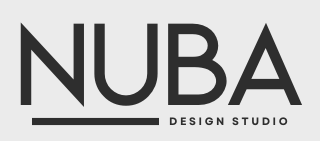A well-designed website is essential for any business looking to establish a strong online presence. Elementor Pro, a powerful WordPress page builder, makes it easier than ever to create stunning, professional, and fully customizable websites without coding. Whether you’re a beginner or an experienced designer, Elementor Pro offers a drag-and-drop interface and advanced design features that make website development smooth and efficient.
In this blog, we’ll explore the benefits of designing a website with Elementor Pro, key features, and best practices for creating a high-converting site.
Why Choose Elementor Pro for Website Design?
Elementor Pro is one of the most popular WordPress page builders, offering a wide range of features to help you design visually stunning websites. Here’s why it’s the best choice:
✅ Drag-and-Drop Builder – No coding required; simply move elements into place.
✅ Pre-Built Templates – Access hundreds of professional designs to speed up development.
✅ Mobile-Responsive Design – Websites automatically adjust to all screen sizes.
✅ Customizable Widgets – Use advanced elements like forms, sliders, pop-ups, and animations.
✅ Faster Website Performance – Lightweight code ensures SEO-friendly and fast-loading pages.
Now, let’s dive into how you can design a WordPress website using Elementor Pro step by step.
Step 1: Install Elementor Pro on Your WordPress Website
To get started, you need to install Elementor Pro:
1️⃣ Install WordPress – Choose a reliable hosting provider like SiteGround or Bluehost.
2️⃣ Install Elementor Free Version – Go to your WordPress dashboard → Plugins → Add New → Search for Elementor.
3️⃣ Upgrade to Elementor Pro – Purchase a Pro license, download the zip file, and upload it via the Plugins section in WordPress.
4️⃣ Activate Elementor Pro – Connect your website to your Elementor account for full access to premium features.
Step 2: Choose a Website Template or Start from Scratch
Elementor Pro offers ready-made templates that save time in website design. You can:
🔹 Use pre-designed templates from the Elementor Template Library.
🔹 Customize a blank canvas and build a unique design from scratch.
🔹 Import third-party Elementor templates to match your branding.
Pro Tip: Choose a lightweight, SEO-friendly WordPress theme like Astra or Hello Elementor for better performance.
Step 3: Design the Homepage with Elementor Pro
Your homepage is the first thing visitors see, so make it engaging and conversion-focused. With Elementor Pro, you can:
🔸 Add a Hero Section – Use an eye-catching headline, background image, or video.
🔸 Create a Call-to-Action (CTA) – Encourage visitors to contact you, sign up, or make a purchase.
🔸 Showcase Services or Products – Use grids, sliders, and pricing tables.
🔸 Include Testimonials – Build trust with customer reviews and success stories.
🔸 Optimize for Mobile & Speed – Ensure fast loading and mobile responsiveness.
Step 4: Customize Headers & Footers with Elementor Theme Builder
Elementor Pro’s Theme Builder lets you design custom headers and footers without coding:
✔ Add sticky headers for better navigation.
✔ Customize logos, menus, and icons easily.
✔ Create dynamic footer sections with links and social media icons.
This ensures a branded, professional look across your entire website.
Step 5: Build Essential Pages with Elementor Pro
Every website needs key pages, including:
📌 About Us Page – Share your brand’s story, mission, and values.
📌 Services/Products Page – Highlight offerings with interactive elements.
📌 Contact Page – Include a contact form, Google Maps, and business details.
📌 Blog Page – Use Elementor’s Post Grid widget for stylish blog layouts.
These pages help improve SEO rankings and provide valuable information to visitors.
Step 6: Add Advanced Features with Elementor Pro Widgets
Elementor Pro offers powerful widgets to enhance website functionality:
🔹 Forms Widget – Create custom contact, booking, and subscription forms.
🔹 Popup Builder – Design pop-ups for lead generation and special offers.
🔹 WooCommerce Integration – Build a beautiful online store with product showcases.
🔹 Animation & Motion Effects – Add engaging scrolling effects and transitions.
These features make your website interactive and user-friendly.
Step 7: Optimize Your Elementor Website for SEO & Speed
A well-designed website must be SEO-friendly and fast-loading. Follow these best practices:
✔ Use an SEO Plugin – Install Yoast SEO or Rank Math for keyword optimization.
✔ Optimize Images – Use compressed images via plugins like Smush or TinyPNG.
✔ Enable Caching – Use WP Rocket or W3 Total Cache to boost page speed.
✔ Minimize Plugins – Avoid excessive plugins that slow down your site.
✔ Mobile Optimization – Test responsiveness on Google’s Mobile-Friendly Test tool.
These steps help improve your Google rankings and provide a better user experience.
Step 8: Test & Launch Your Website
Before launching, thoroughly test your website:
🔍 Check Mobile & Desktop Views – Ensure it looks great on all devices.
🔍 Test Page Load Speed – Use GTmetrix or Google PageSpeed Insights.
🔍 Verify Contact Forms & Links – Ensure all buttons and forms work.
🔍 Check for Broken Links – Use tools like Broken Link Checker.
Once everything is perfect, publish your website and start promoting it! 🚀
Conclusion
Designing a website with Elementor Pro makes website development easy, fast, and highly customizable. Whether you’re building a business site, eCommerce store, or personal blog, Elementor Pro provides powerful tools to create a visually stunning and high-performing website.
Want a Custom Elementor Website?
Need professional website design & development? Our experts can create a custom, SEO-friendly WordPress website using Elementor Pro. Contact us today to get started! 🎨✨
Would you like me to include Elementor pricing details or additional customization tips? 😊

